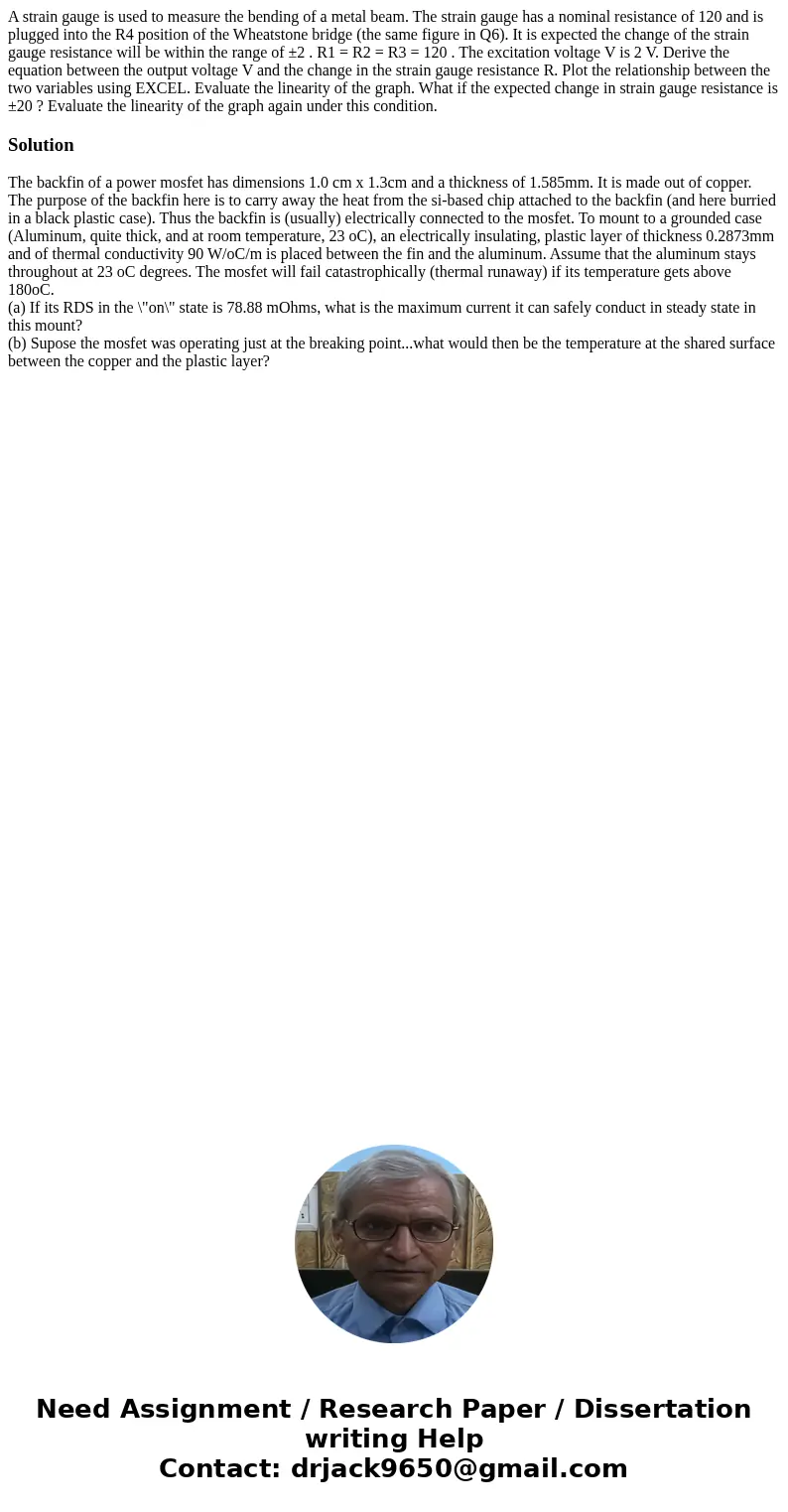A strain gauge is used to measure the bending of a metal bea
A strain gauge is used to measure the bending of a metal beam. The strain gauge has a nominal resistance of 120 and is plugged into the R4 position of the Wheatstone bridge (the same figure in Q6). It is expected the change of the strain gauge resistance will be within the range of ±2 . R1 = R2 = R3 = 120 . The excitation voltage V is 2 V. Derive the equation between the output voltage V and the change in the strain gauge resistance R. Plot the relationship between the two variables using EXCEL. Evaluate the linearity of the graph. What if the expected change in strain gauge resistance is ±20 ? Evaluate the linearity of the graph again under this condition.
Solution
The backfin of a power mosfet has dimensions 1.0 cm x 1.3cm and a thickness of 1.585mm. It is made out of copper. The purpose of the backfin here is to carry away the heat from the si-based chip attached to the backfin (and here burried in a black plastic case). Thus the backfin is (usually) electrically connected to the mosfet. To mount to a grounded case (Aluminum, quite thick, and at room temperature, 23 oC), an electrically insulating, plastic layer of thickness 0.2873mm and of thermal conductivity 90 W/oC/m is placed between the fin and the aluminum. Assume that the aluminum stays throughout at 23 oC degrees. The mosfet will fail catastrophically (thermal runaway) if its temperature gets above 180oC.
(a) If its RDS in the \"on\" state is 78.88 mOhms, what is the maximum current it can safely conduct in steady state in this mount?
(b) Supose the mosfet was operating just at the breaking point...what would then be the temperature at the shared surface between the copper and the plastic layer?

 Homework Sourse
Homework Sourse